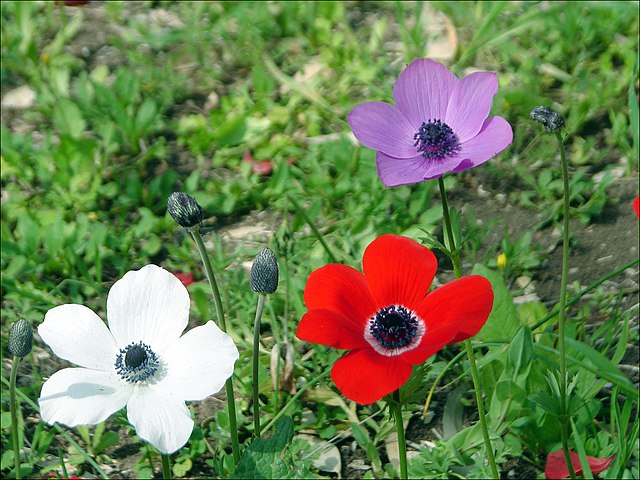Common Names and Other Names:
- Anemone
- Windflower
- Pasque flower (specific species like Anemone pulsatilla)
Where Does It Occur:
Anemones are found worldwide, particularly in:
- Temperate zones of the Northern Hemisphere
- Europe
- North America
- Japan
These plants thrive in:
- Wooded areas
- Meadows
- Alpine regions
Basic Ingredients (Constituents):
Anemone contains several compounds that contribute to its medicinal properties, such as:
- Triterpenoid saponins
- Ranunculin (which converts to protoanemonin, a toxic irritant when the plant is crushed)
- Flavonoids
- Tannins
Most Commonly Used For Treatment Of:
- Respiratory Conditions:
- Historically used to treat conditions like bronchitis and colds due to its expectorant properties.
- Menstrual Discomfort:
- Anemone pulsatilla has been used to help ease menstrual cramps.
- Sedative Effects:
- Some species have been used to induce relaxation and help with sleep disorders.
- Antirheumatic Properties:
- Used in traditional medicine to treat rheumatic pain and inflammation.
Side Effects:
Anemone, especially the fresh plant, can be toxic and must be used with caution:
- Skin Irritation:
- Contact with the sap can cause dermatitis and other skin irritations.
- Gastrointestinal Upset:
- Ingestion of parts of the plant can lead to nausea, vomiting, and diarrhea.
- Neurotoxic Effects:
- Large doses can be highly toxic and affect the central nervous system.
Available Forms in the Market:
- Dried Herb:
- Typically used in teas or as a component in herbal mixtures.
- Tinctures:
- Extracts that may be used under guidance to mitigate the toxic effects while using therapeutically.
- Homeopathic Remedies:
- Diluted forms are used in homeopathy for various symptoms, adhering to the homeopathic principle of “like cures like.”
Research and Results:
- Anti-inflammatory and Analgesic Effects:
- Studies on Anemone pulsatilla extract have shown potential anti-inflammatory and analgesic properties.
- Menstrual Cramps:
- Some clinical trials have looked into Pulsatilla for reducing menstrual pain, with promising initial results.
Precautions:
- Pregnancy and Breastfeeding:
- Not recommended due to potential toxicity.
- Allergies:
- Individuals allergic to other members of the Ranunculaceae family should avoid anemones.
- Handling:
- Gloves should be worn when handling fresh plants to avoid skin contact with irritating sap.
- Usage:
- Due to its toxic nature, anemone should only be used under professional supervision in a clinical or structured setting.
Conclusion:
Anemone spp. are beautiful but potent plants with historical uses in treating various ailments. However, due to their toxic properties, they should be used with extreme caution and under professional guidance, primarily in processed forms like homeopathic remedies or highly diluted tinctures.
Disclaimer: This information is for educational purposes only and is not intended to replace professional medical advice. Always consult with a healthcare professional before starting any new treatment, especially those involving potentially toxic plants like anemone.
4
« Back to Glossary Index